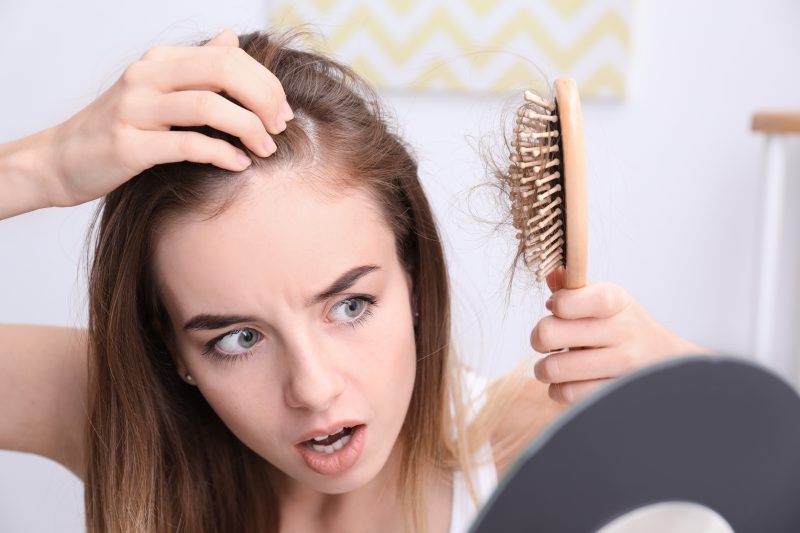Table Of Content

There are many other potential causes of hair loss in women. Treatment options for hair loss typically depend on the cause. They can also vary according to the pattern and location of hair loss. While most causes of hair loss are treatable, some may not be. Hair loss can sometimes be a sign of an underlying disease. Poisons that can cause hair loss include arsenic, thallium, mercury, and lithium.
How can I prevent hair loss?
Androgenetic alopecia and frontal fibrosing alopecia, conditions that may lead to baldness, are among common types of hair loss. If you have healthy hair on the back or side of your head, a doctor can surgically remove hair strands from those areas and graft them into your scalp in a bare area. It’s another expensive treatment that isn’t generally covered by insurance, but it tends to be a long-lasting solution. You can either purchase over-the-counter laser devices to use at home or receive the treatments from a provider.
Prescription medication that can regrow hair
It discusses the hormones that can cause hair to fall out and strategies for combating menopausal hair loss. It’s essential that you not become pregnant while taking spironolactone. To prevent pregnancy, your dermatologist will also prescribe a birth control pill if it’s possible for you to get pregnant. After 12 weeks of treatment, the patients treated with minoxidil and microneedling had significantly more hair growth. Once your dermatologist has this information, it’s often possible to tell you what’s causing your hair loss. This is a procedure in which your doctor removes hair from a part of your scalp where hair growth is full and implants it into an area where hair is thinning.
Telogen effluvium
A healthcare provider might recommend using minoxidil (Rogaine®). You can purchase the 2% or 5% solution over the counter (OTC). However, you have to follow directions exactly and use the product indefinitely. Don’t use this product if you’re pregnant, if you plan to get pregnant or if you’re breastfeeding (chestfeeding). In addition, a healthcare provider might recommend forms of light therapy like using the HairMax Lasercomb®. Another FDA-approved laser product is the Theradome LH80 PRO® helmet and low-light laser helmets and caps.
Pregnancy, and especially giving birth, can lead to hair loss. You're most likely to see hair loss about 3 months after giving birth. That's because your estrogen levels drop after childbirth. If you're losing hair while pregnant, ask your doctor if you might have a dietary deficiency.
How to get thicker hair and why is your hair thinning? - USA TODAY
How to get thicker hair and why is your hair thinning?.
Posted: Thu, 07 Sep 2023 07:00:00 GMT [source]
Others may find relief in changing their hairstyle or wearing a wig. See a dermatologist as soon as possible when you notice hair loss. The sooner you get treatment, the more effective it’ll be.
Another cause of hair loss is called telogen effluvium (TE), which is typically temporary. According to the American Academy of Dermatology (AAD), TE isn’t actually defined as “hair loss,” but rather as excessive hair shedding. Most healthy people lose up to 100 strands of hair per day. As part of your hair’s growth cycle, new strands grow and take the place of the ones you shed. Hair usually starts to regrow within months of finishing chemotherapy or radiation treatments to the head or neck. Dermatologists can offer medication to help hair grow back more quickly.
Looking at your scalp lets your doctor check for any infections or swelling and see where your hair’s falling out. It is typical for a certain amount of hair — usually around 100 strands — to fall out every day. Below are some frequently asked questions about hair loss.
Post-COVID hair loss can occur in both men and women: How to spot it and fix it, according to experts - Yahoo Life
Post-COVID hair loss can occur in both men and women: How to spot it and fix it, according to experts.
Posted: Fri, 08 Sep 2023 07:00:00 GMT [source]
Chronic health conditions
Consider the following 12 options, but be sure to talk with your doctor first. It is important to know that androgenetic alopecia typically appears differently in women than men. In women, the hair becomes thinner at the top of the head, and the middle part widens. This results in the production of finer and shorter hair strands, eventually leading to visible thinning of the hair. The genetic predisposition to this sensitivity to androgens determines the likelihood and pattern of hair thinning.
Pattern hair loss can start immediately after puberty and progress over time. Pattern hair loss is the most common cause of hair loss for men and women. Potential causes of hair loss in teenagers include genetic factors, hormonal imbalances, and underlying medical conditions. In some cases, hair loss can be reversible with proper treatment. Different types of hair transplants include grafting, scalp reduction, flap surgery, and tissue expansion. Of these, hair grafting is the most common hair transplant procedure.
It’s normal for women to produce hormones like testosterone. But when they produce too much, it can lead to symptoms like disrupted menstrual cycles, acne, and hair thinning. The majority of people will experience some degree of hair loss throughout their life.
Over-the-counter (OTC) medications generally consist of topical creams, gels, solutions, or foams that you apply directly to the scalp. The most common products contain an ingredient called minoxidil. Tinea capitis, also called ringworm of the scalp, is a fungal infection that can affect the scalp and hair shaft. Over time, if not treated early, the size of the patch or patches will increase and fill with pus.
It's estimated that millions of people experience some form of hair loss. Hair thickness—in terms of the size and shape of each hair follicle as well as how many hair follicles you have on your scalp overall—is influenced by genetics. Hair loss is one of the most common side effects of chemotherapy. Alopecia areata affects up to 6.8 million people in the U.S. If you’re not getting enough of one or more of these, you can have noticeable hair loss. A scalp infection can lead to scaly and sometimes inflamed areas on your scalp.
Otherwise known as Aldactone, spironolactone works to treat hair loss by acting on hormones. Specifically, it binds to androgen receptors and decreases the body’s processing of testosterone. Androgenic alopecia causes the normal hair growth cycle to shorten. As a result, hair doesn’t grow as long or thick as it normally would.

No comments:
Post a Comment